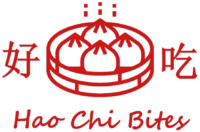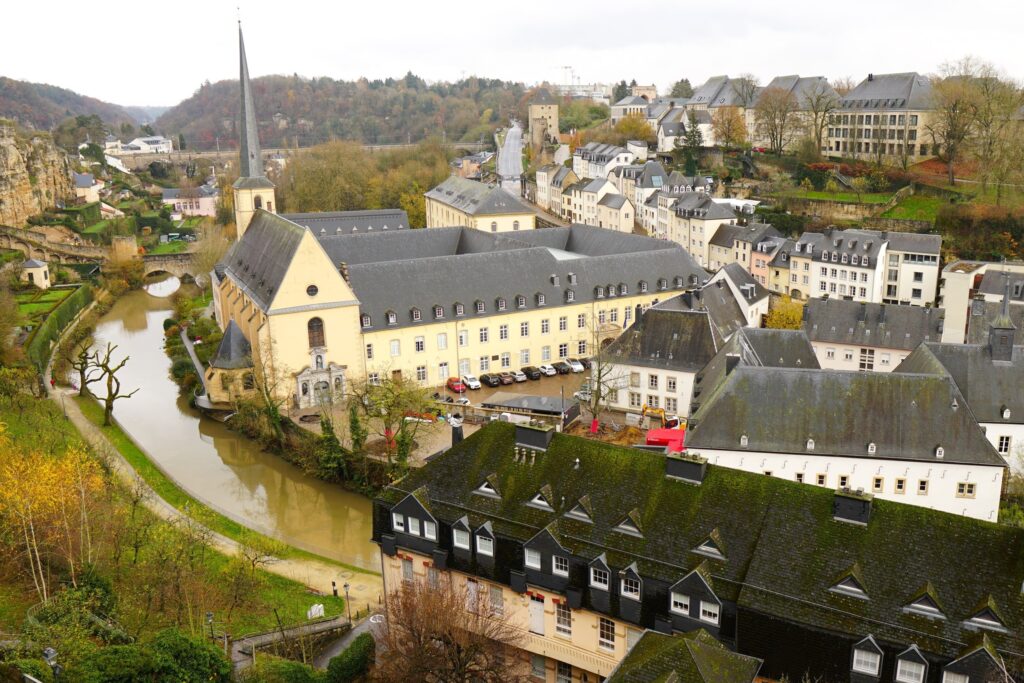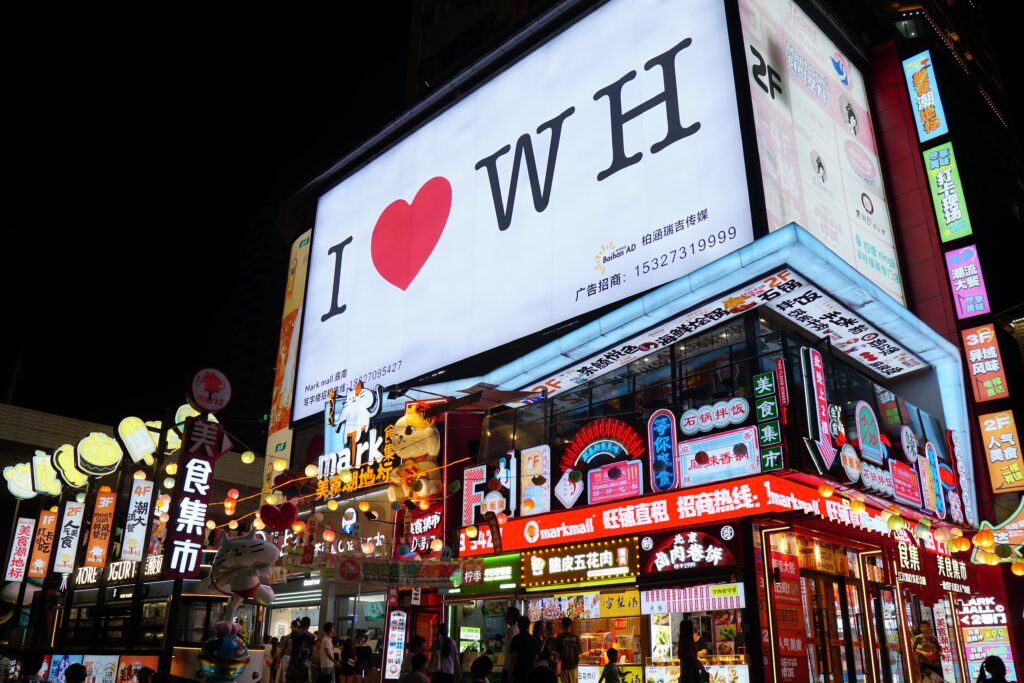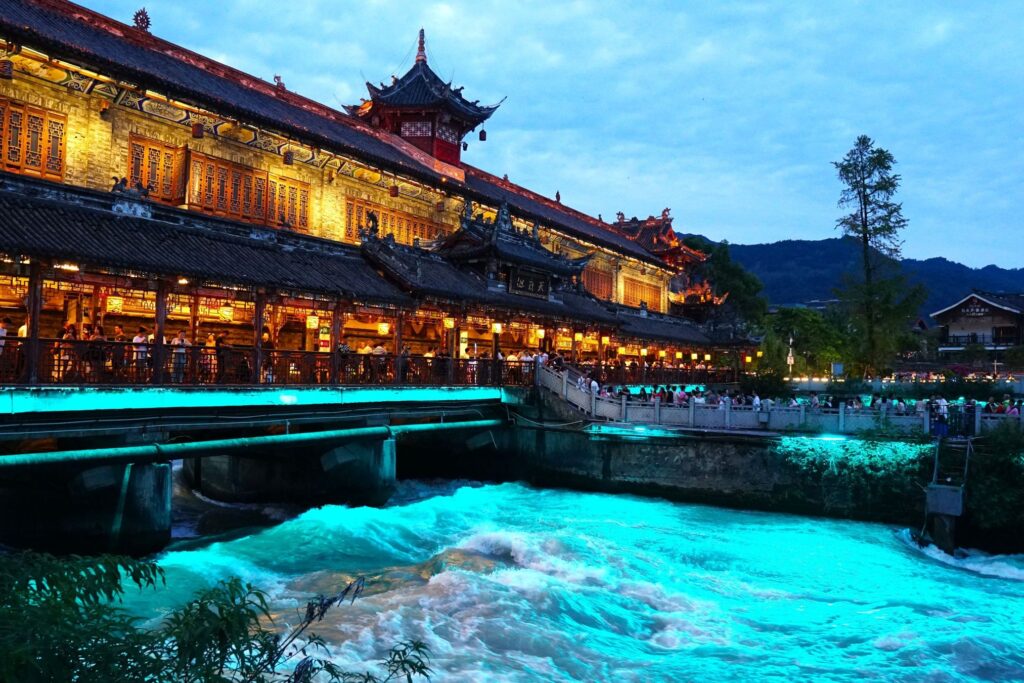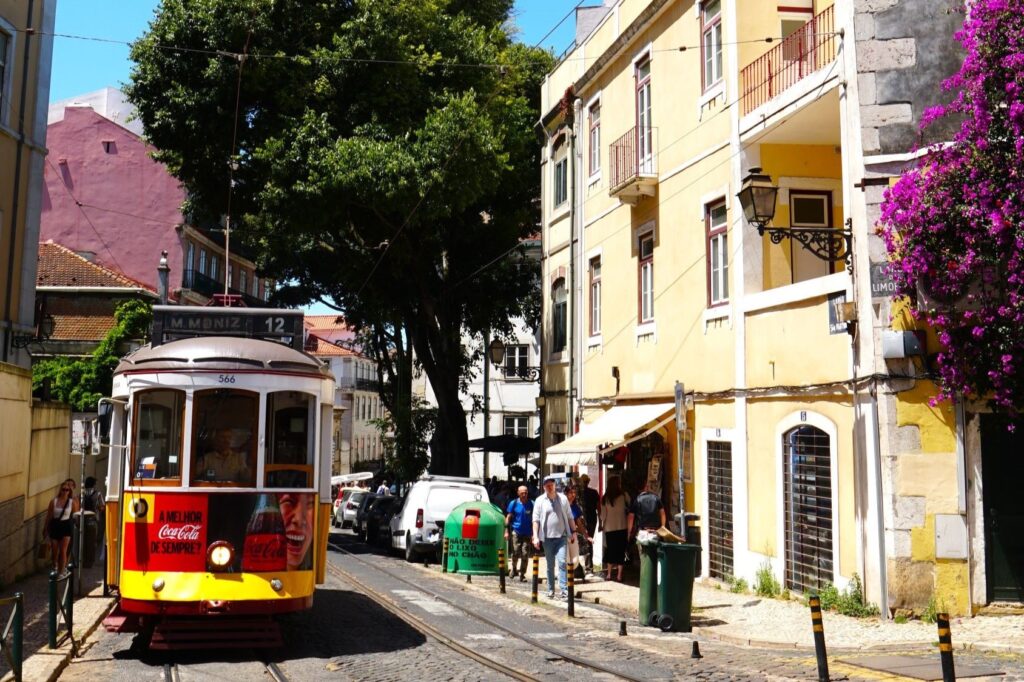Our visit to Luxembourg City is marked by serendipity—this season (early December) is typically the city’s rainiest, but we are greeted with the gentle warmth of sunshine breaking through the light drizzle. The sunlight reflects on raindrops and turns the mundane into something mystical, casting a golden glow over the city’s architecture.
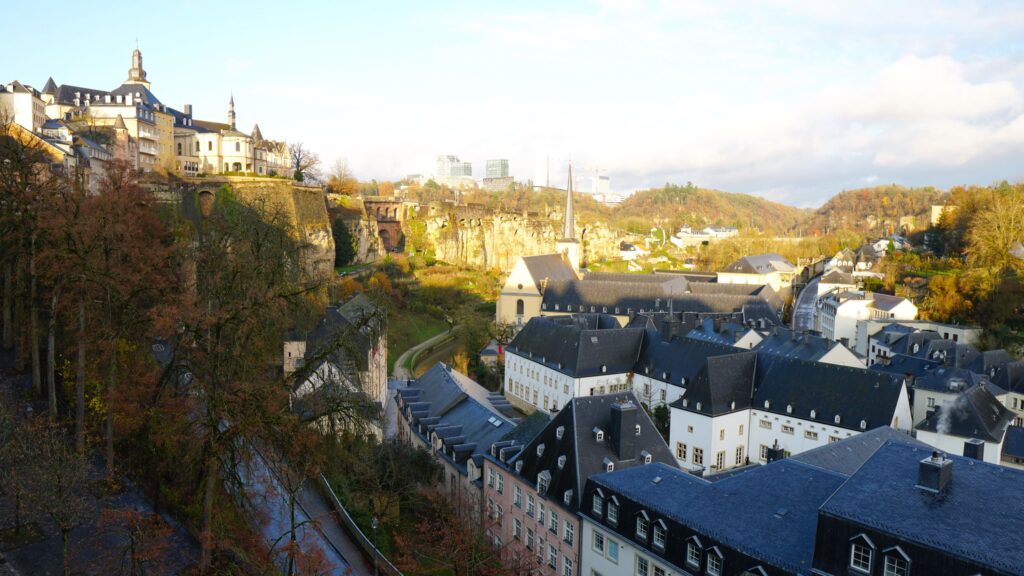
The cityscape of Luxembourg City is bathed in a warm yellow color, its buildings crowned with pointed towers that soar skyward. This golden hue, derived from the local sandstone, glows softly under the sun, giving the city an almost ethereal aura.
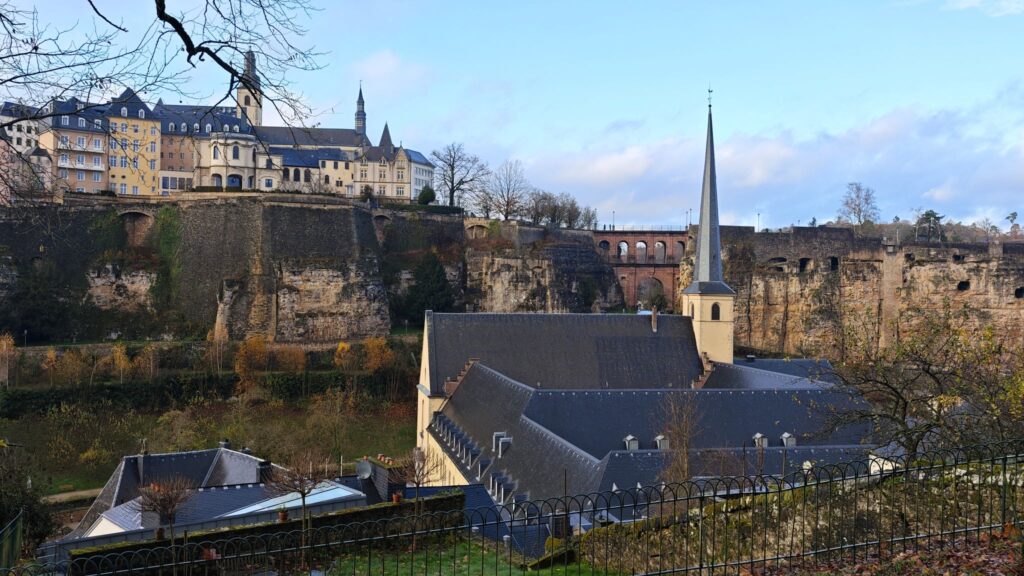
Many of these structures, build between the 16th and 18th centuries, weave together the grace of medieval fortresses, the refinement of Renaissance artistry, the grandeur of Baroque embellishments, and the symmetry of Classical design. Their facades are rich with tales of resilience and splendor, while their Gothic spires grace the skyline like silent sentinels of faith and power.
These elements are most prominent in the majestic Notre-Dame Cathedral and the stately Grand Ducal Palace.
The Grand Ducal Palace, originally constructed in the 16th century during the Renaissance period, was once the city hall and later became the residence of the Grand Duke. Its walls are intricately patterned, but come December, the palace is dressed in festive red and green, resembling a candy box wrapped in cheer. While it is still a functional residence for the Grand Duke, parts of the palace are open to the public (more info here).
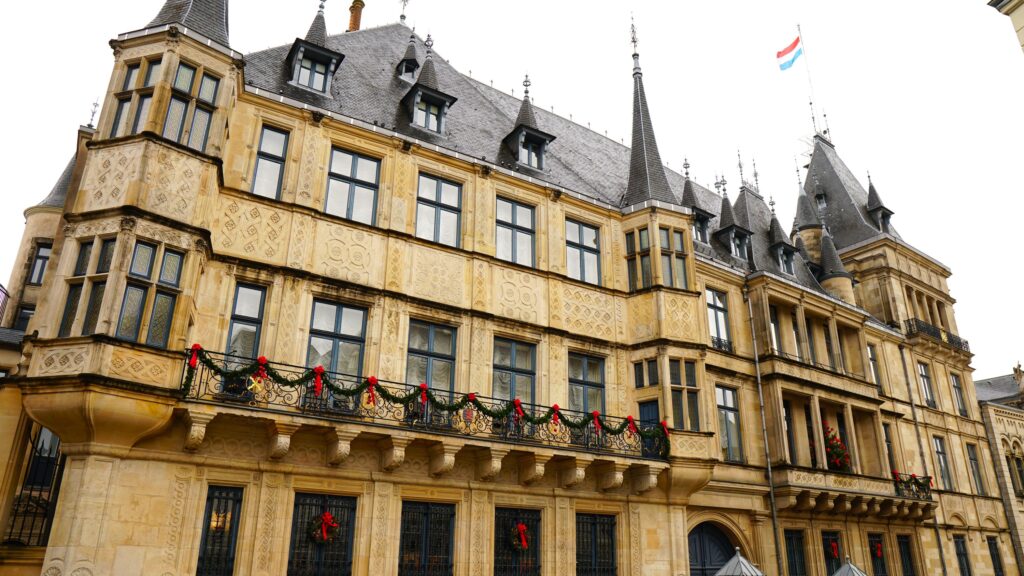
Notre-Dame Cathedral, officially known as Cathédrale Notre-Dame de Luxembourg, blends Gothic and Renaissance styles and is one of the most iconic landmarks in Luxembourg City.
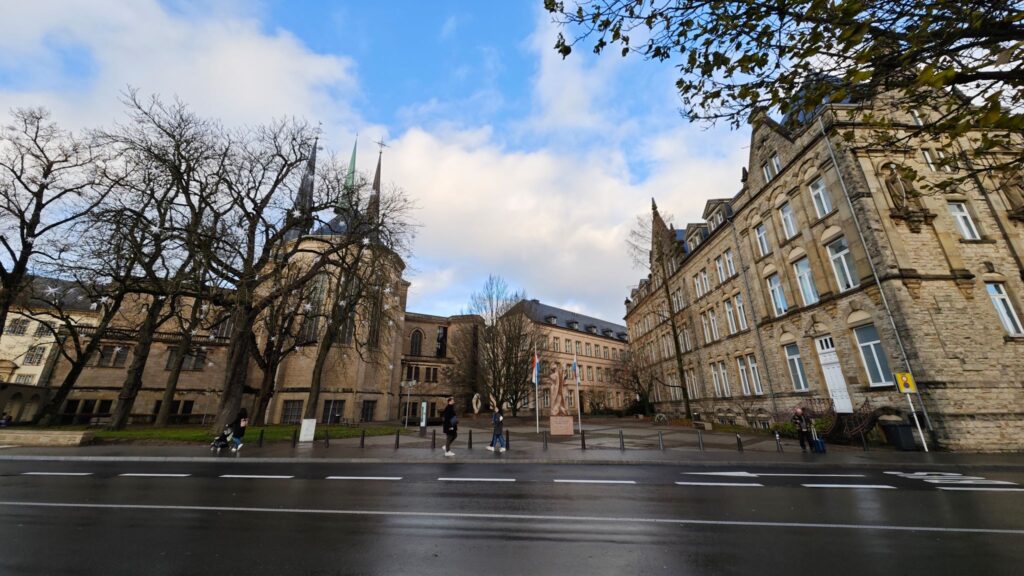

From the outside, you’ll see its striking, elegant spires reaching skyward.
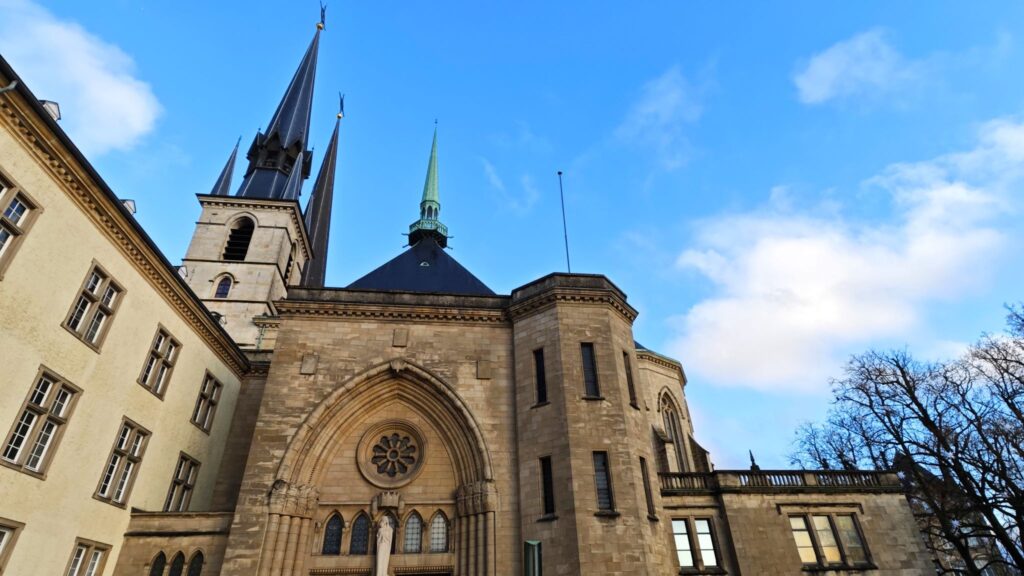
Inside, the beautiful stained glass windows cast vibrant colors across the pews. The cathedral also houses a remarkable collection of art and historical relics, including an impressive organ and altars. An active place of worship, Notre-Dame serves as the site for many state ceremonies and is the burial place of several members of the Grand Ducal family.
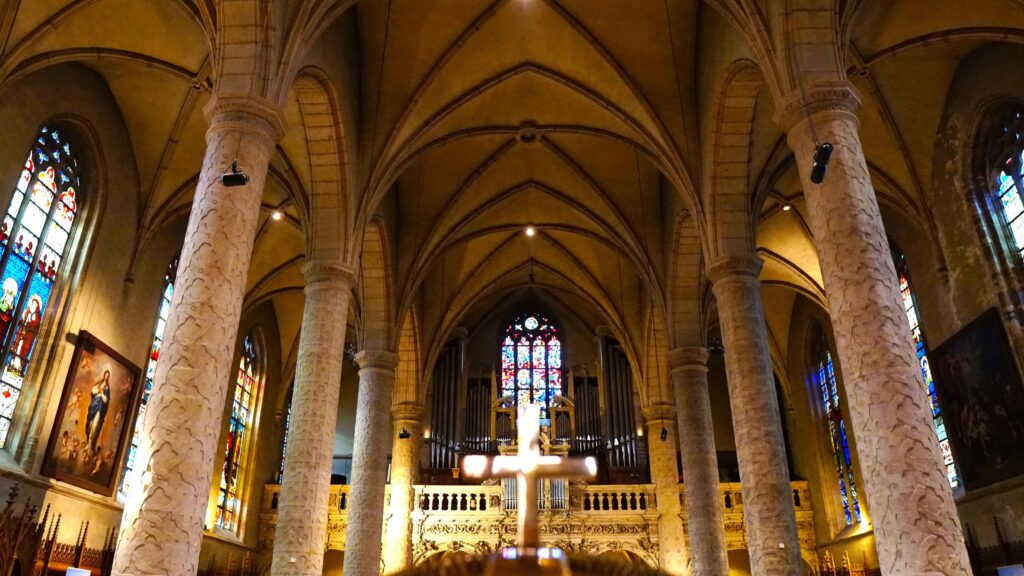
As we walk through the streets, strings of oriental lanterns surprise us, adding an Eastern charm to the city’s ambiance.
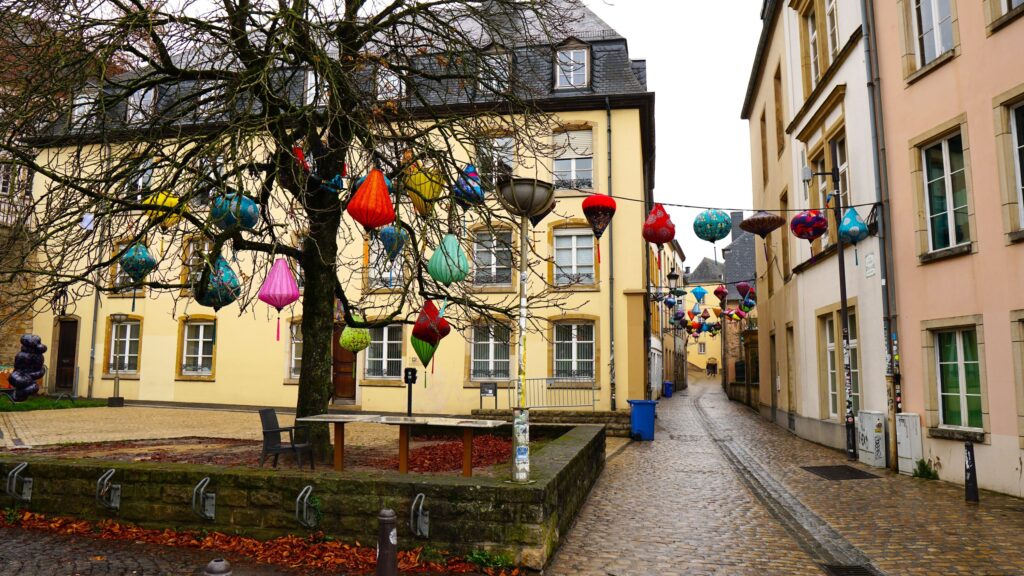
One of the city’s iconic squares, Place Guillaume II features a green-patinated bronze statue of a man on horseback—William II, the King of the Netherlands and Grand Duke of Luxembourg in the 19th Century. King William II is remembered for granting Luxembourg its first constitution, a significant step in the nation’s development as a constitutional monarchy.
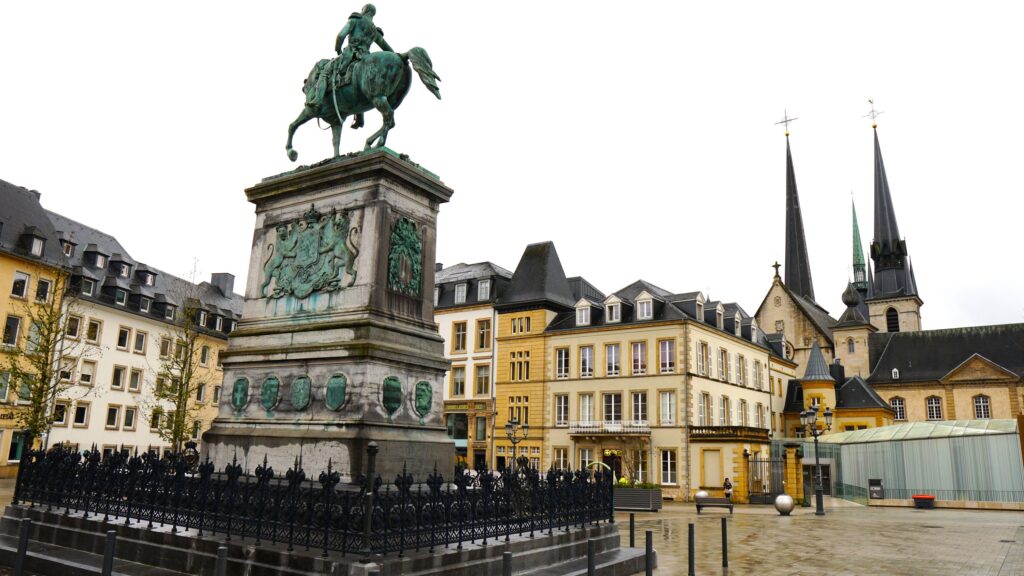
The heart of Luxembourg lies in the Alzette Valley, an oasis where nature and history coexist. This area, unbelievably tranquil for the center of a bustling city, is defined by a picturesque scene of centuries-old bridges, lush greenery, steep cliffs, alleys and pathways winding through the valley. It feels more like a sprawling park than one of Europe’s busiest financial hubs.
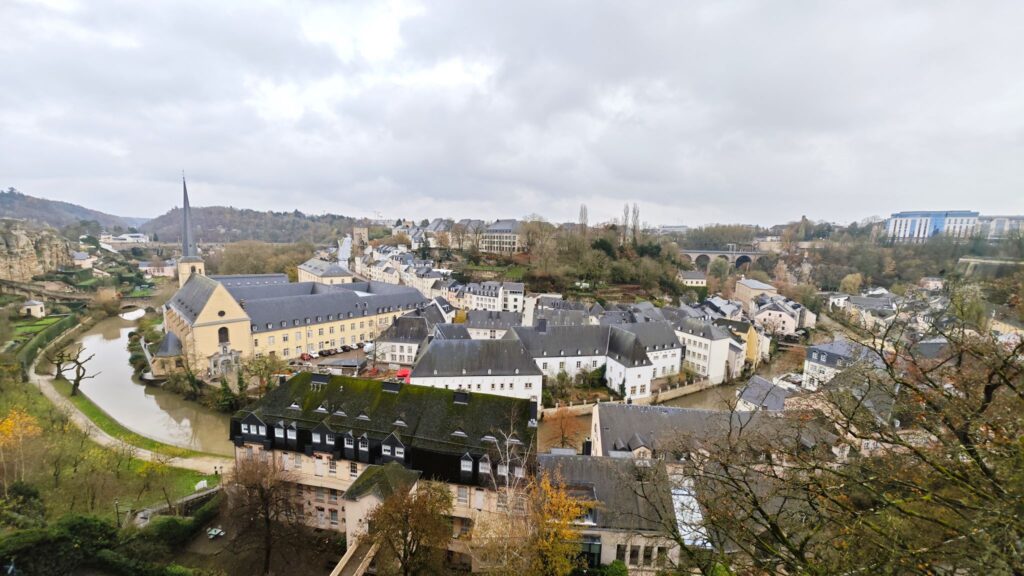
From the heights of the Chemin de la Corniche, often called “Europe’s most beautiful balcony,” the valley unfolds its full magic before you. Below, the winding river glimmers like liquid silver, cradled by medieval stone bridges.
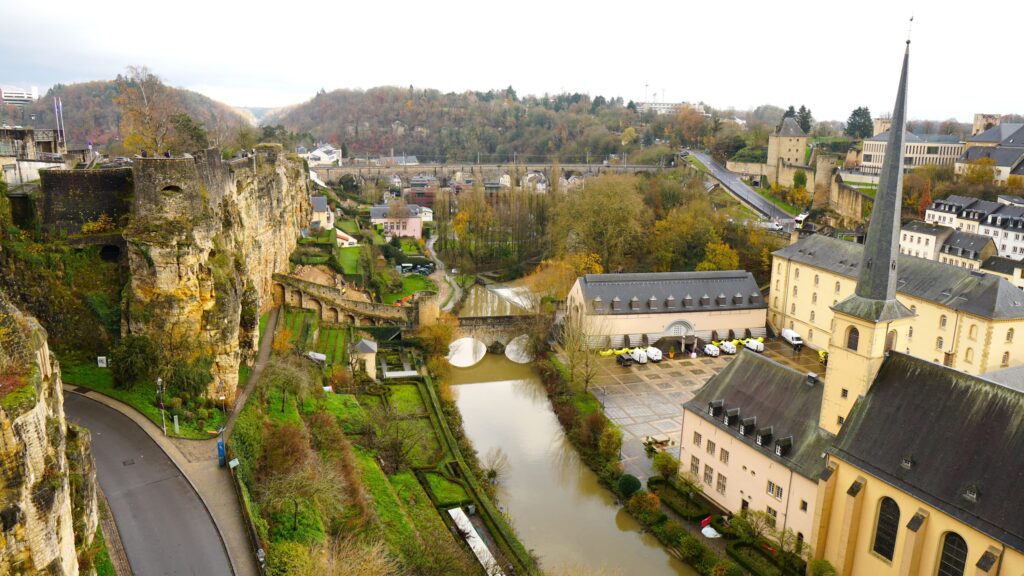
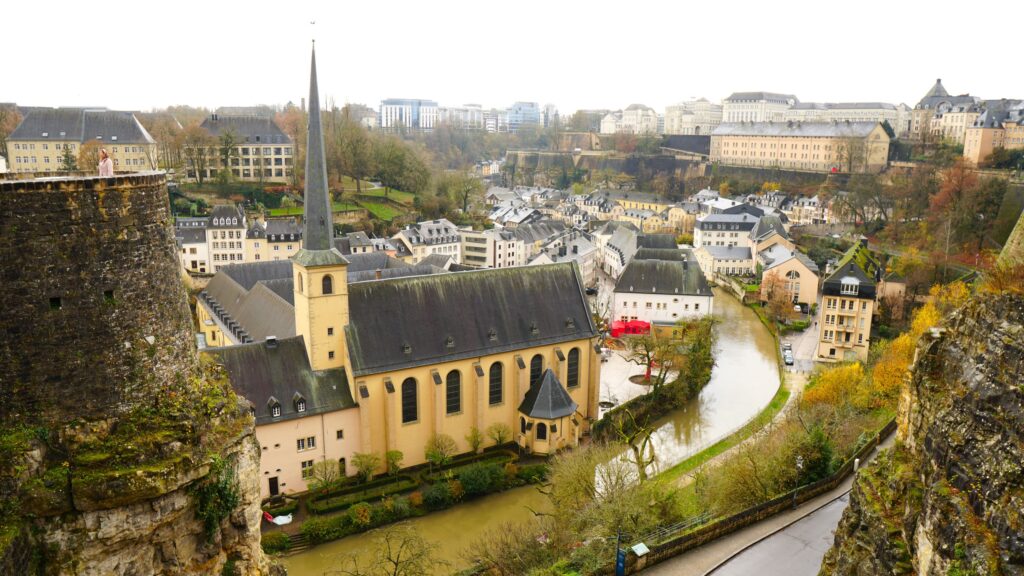
The spires of Gothic churches peek through the expansive, crisp autumn sky, and the cobblestone streets of the river town shimmer with stories etched into the timeworn surfaces.

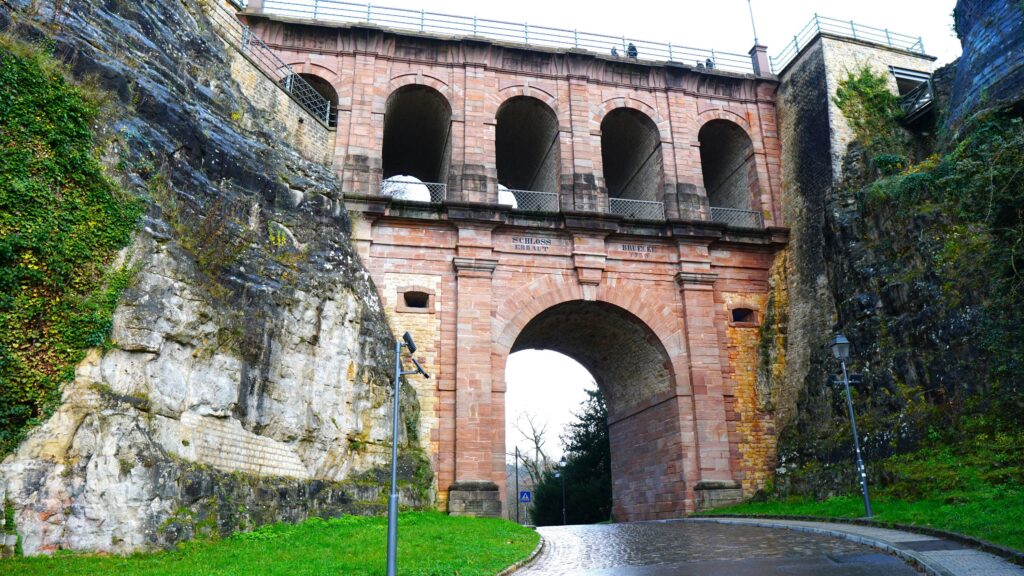
The Passerelle, also known as the “Old Bridge” is an impressive stone viaduct with multiple arches that span the valley.
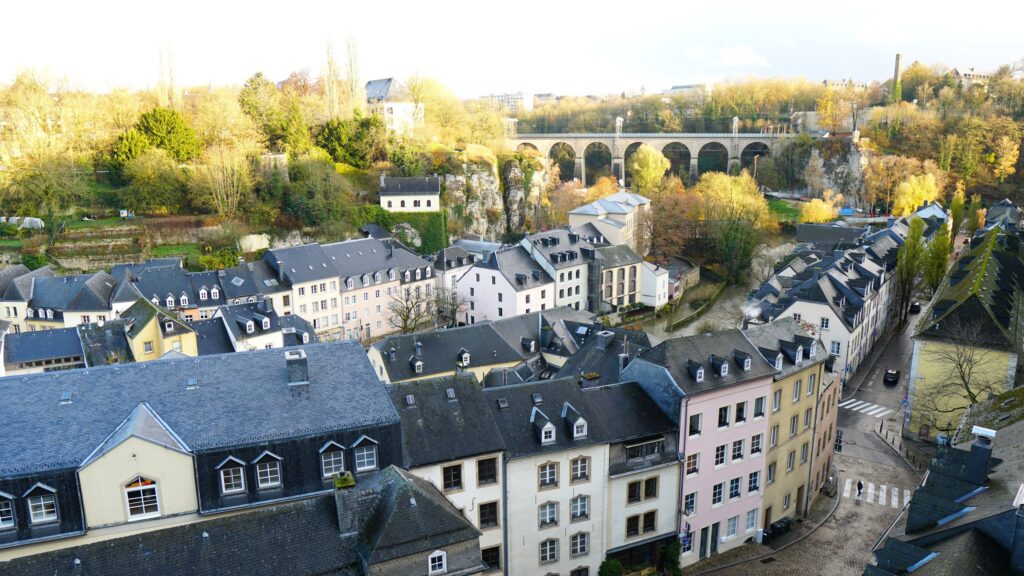
As you explore this area, don’t miss the Casemates du Bock, a UNESCO World Heritage Site and a labyrinth of caves carved into the cliffs. Once part of the city’s fortifications, these tunnels are now a fascinating window into Luxembourg’s military past. Visiting early is recommended, as they can be closed early without notice, especially during off-peak seasons.
After visiting the upper area, descend into the valley and explore the historic district of Grund, a charming river town at the base of the valley. This area is a haven of tranquility, where the streets are largely car-free, with wide pedestrian pathways that invite leisurely walk.
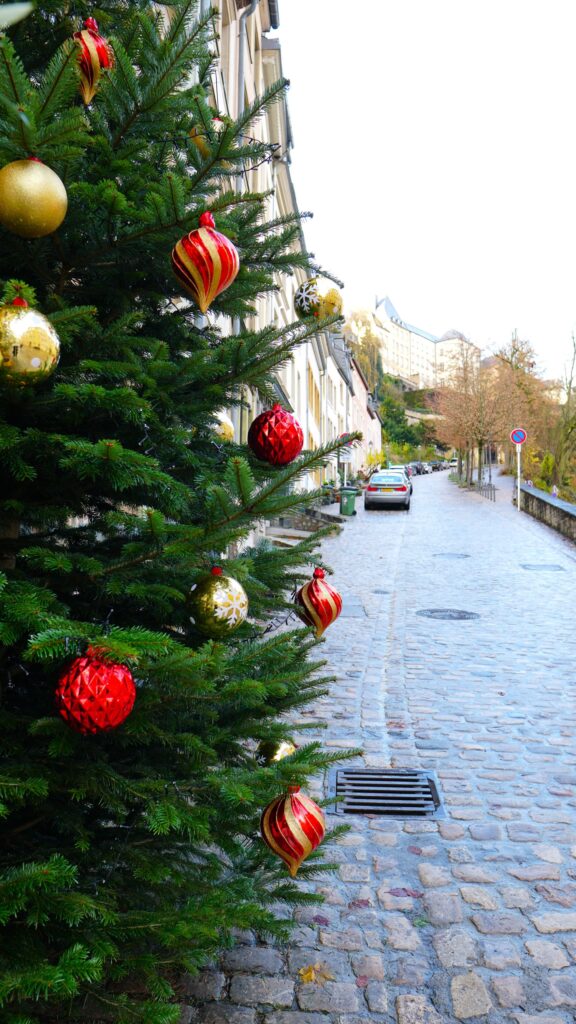
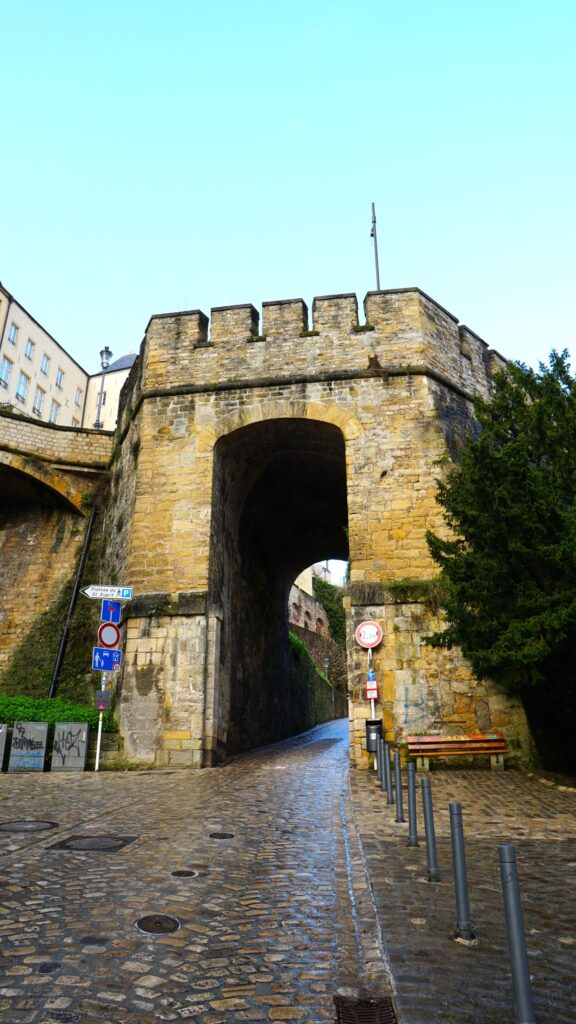
As we reach the town, a gentle drizzle began to fall, and we walk on, accompanied by the soft murmurs of the Alzette River, echoing against the ancient cliffs.
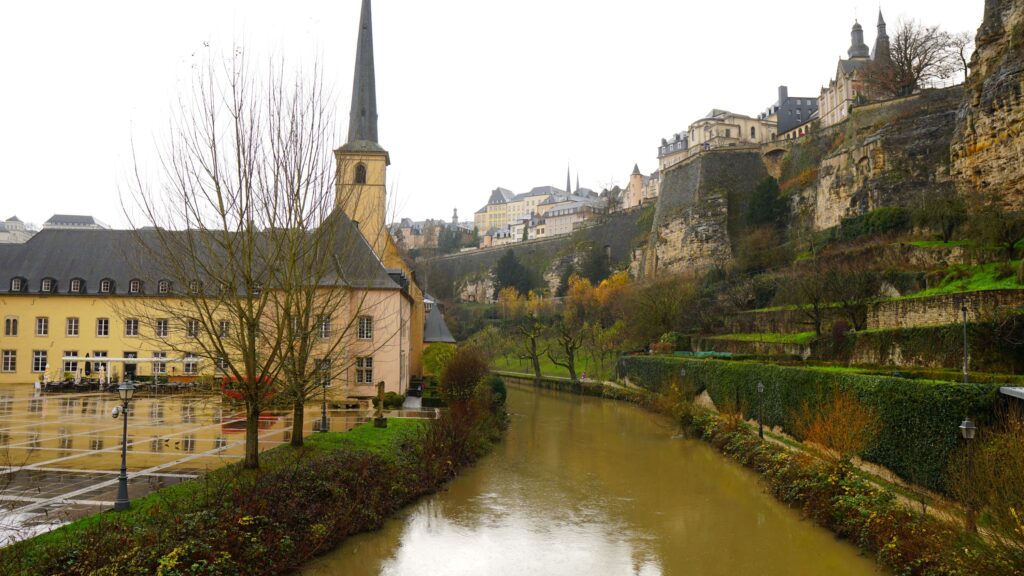
The architecture here is similar to Germany, including Fachwerk houses – traditional half-timbered houses that tell of Luxembourg’s historical connection to Germany. Their presence reflects the cultural fusion that has defined the city for centuries, as Luxembourg was once part of the Holy Roman Empire and later came under German influence.
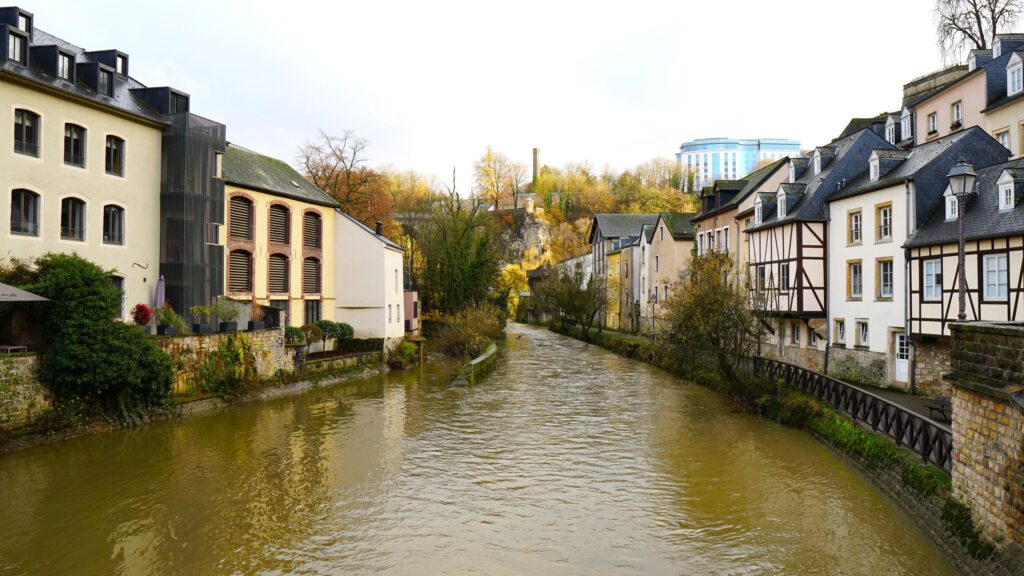
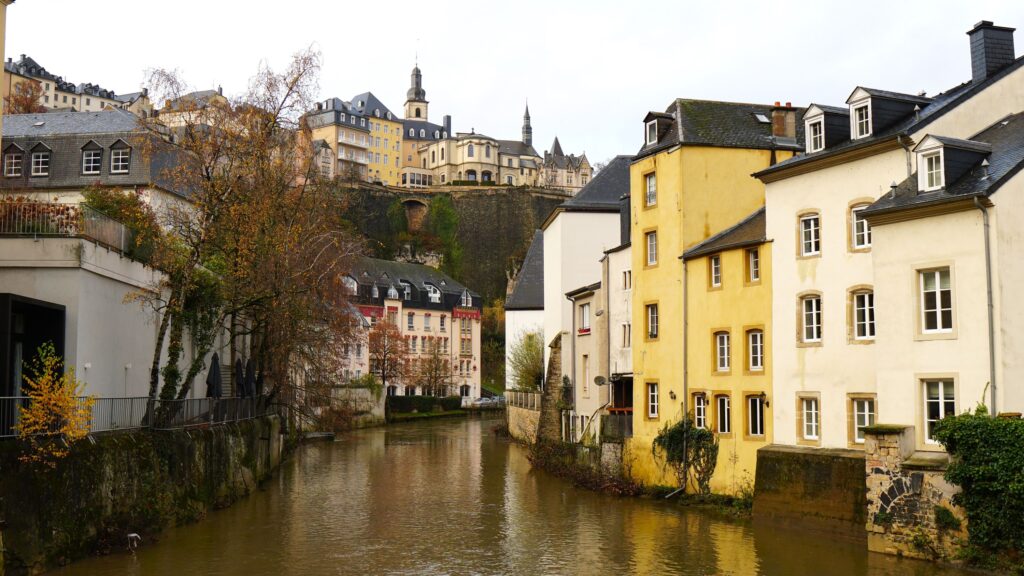
Luxembourg’s Grand Rue is one of the city’s main shopping streets, where upscale stores, boutiques, artisan shops, and trendy cafes line the way. It’s a bustling haven for shoppers and art lovers. The street is often punctuated by interesting art installations scattered around the squares. These pieces give you an unexpected fusion of tradition and innovation, adding a modern flair to the old-world setting.
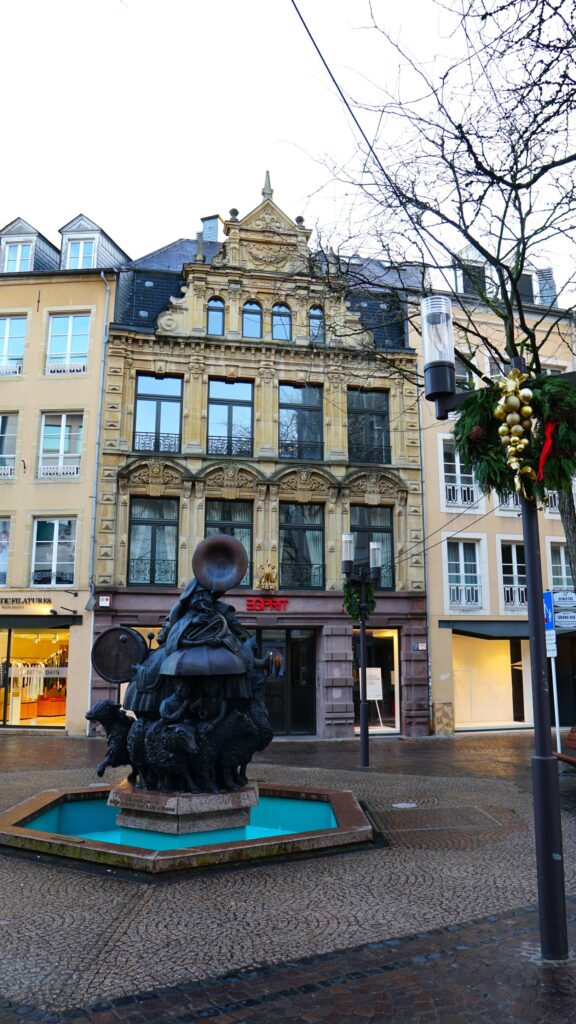
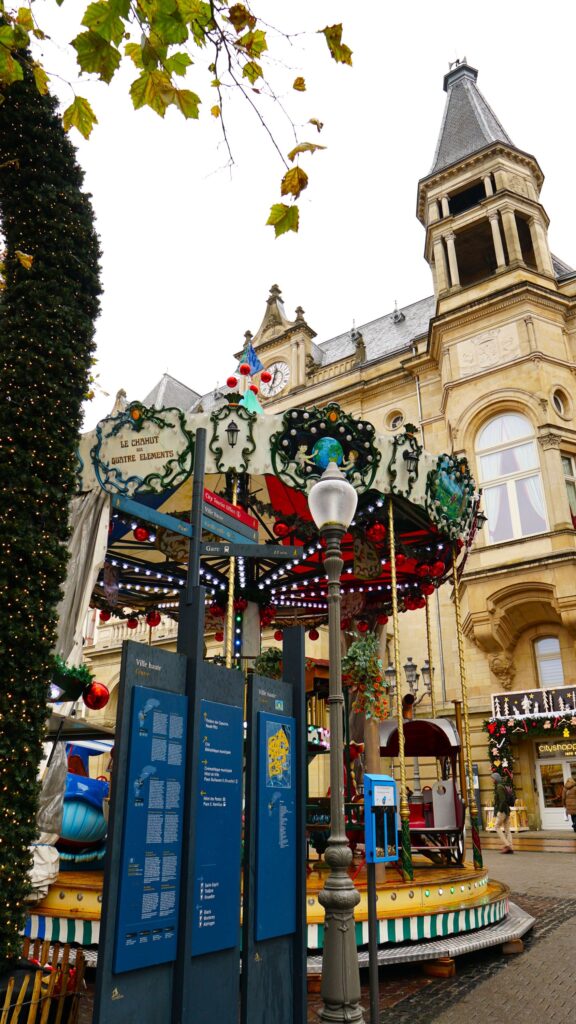
During Christmas season, this district is alive with twinkling lights, and filled with the scent of mulled wine and festive stalls – the familiar warmth and charm just like in Germany. The Christmas market’s resemblance is no coincidence, with the country’s deep-rooted historical ties to Germanic culture.
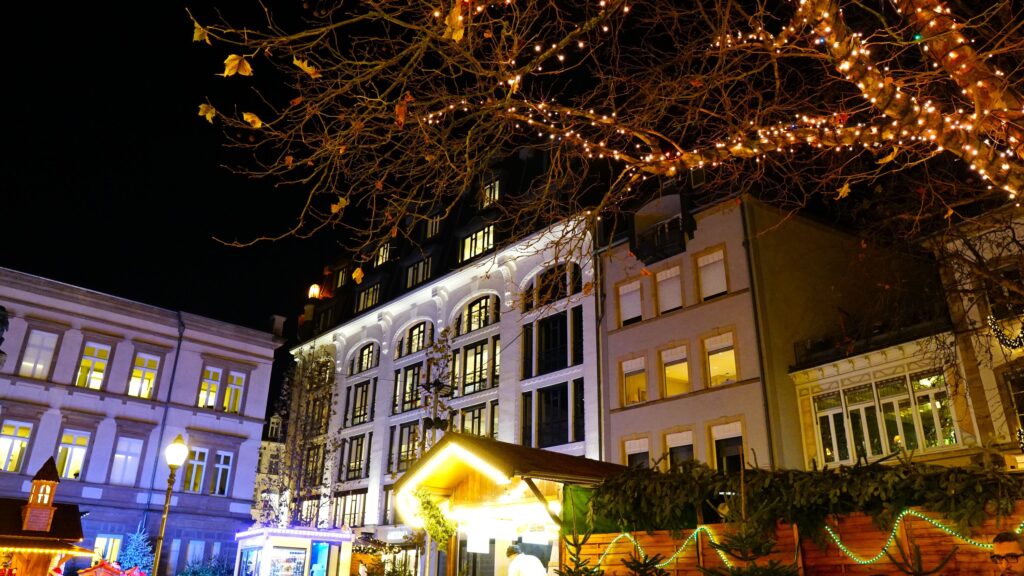
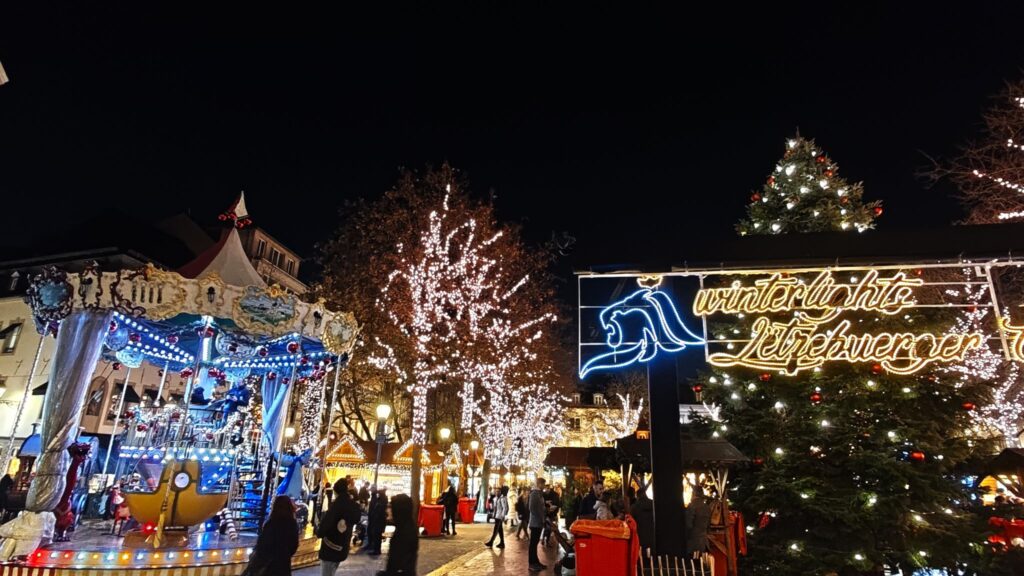
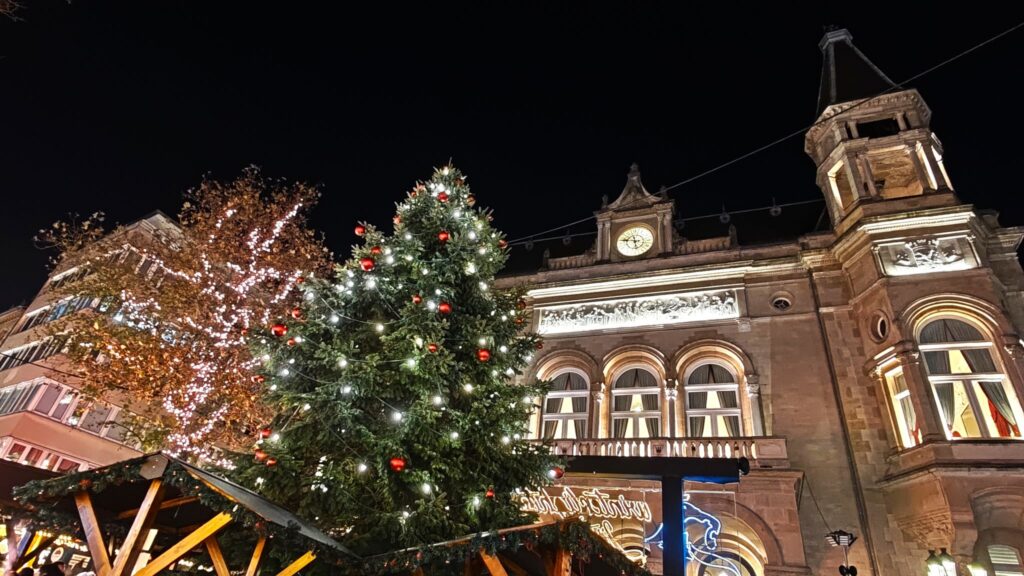
More tips for your visit:
- How Long to Visit: Luxembourg City is compact and can be thoroughly explored in 1–2 days. Spend a full day touring the historic and scenic spots in the center, and another day if you’d like to take your time to explore nearby areas.
- Where to Stay: Opt for hotels in the city center (€150-€250+ per night) for easy access to major attractions. Or you can stay in the outskirts (€70-€200 per night) and drive in—it’s a small city and the drive typically takes 10 – 20 min, but expect delays during rush hours.
- Getting Around: Luxembourg offers free public transport incl.buses, trams, and trains for residents and tourists. Most attractions are within walking distance, and there are budget-friendly bike rentals like Vel’OH! available.
These connections to its neighboring countries are also seen in Luxembourg’s rich culinary blend, influenced by both German and French traditions. Nearby, we discovered Brasserie du Cercle, a restaurant that serves authentic Luxembourgish dishes.
The multicultural flair is evident here, with menu available in German, French, and English, and the staff fluent in Luxembourgish, French, German, English, and even Italian. The food also speaks of this cultural fusion, with French dishes like escargots, tarte flambée, and Reibekuchen – crispy potato pancakes which are a traditional snack at German Christmas markets.
For a starter, we ordered the Escargots, or snails with parsley and garlic. It’s a classic French delicacy that features six snails placed in a ceramic plate with six indentations, specially designed to hold each snail snugly, immersing them in a flavorful butter sauce.
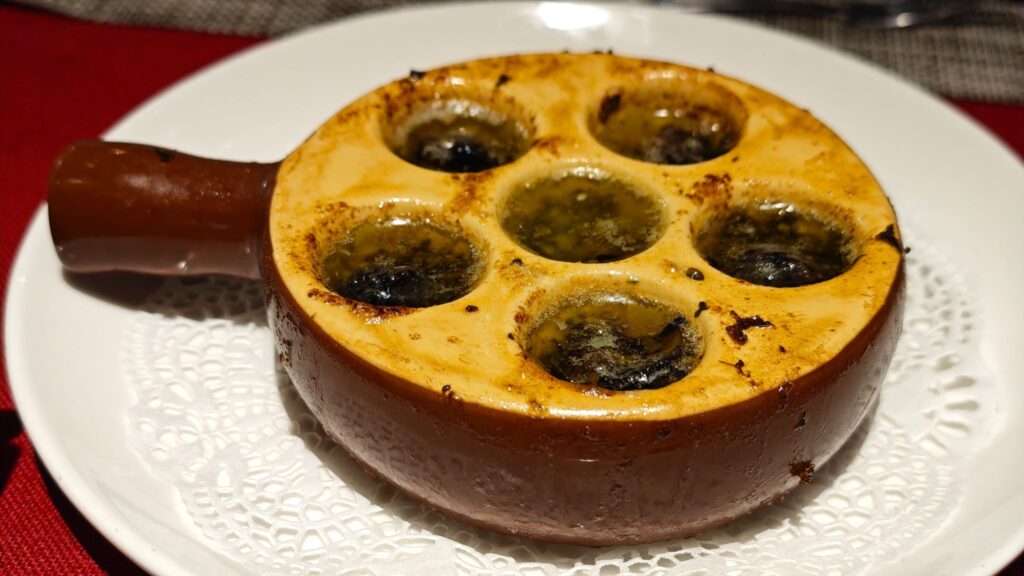
The snails themselves taste tender, slightly chewy with a mild, earthy flavor. They’re bathed in a rich, aromatic sauce made from butter, garlic, parsley, mild olive oil, and a hint of white wine. The sauce infuses the snails with a delicate richness, but the flavor remains clean.
The tender, juicy snails absorb all the flavors of garlic and parsley, creating a savory taste with just the right amount of herbal freshness. The rich garlic-butter sauce is perfect for dipping crusty bread, which is served alongside to soak up the remaining juices.
For the main course, we followed the waitress’s recommendation and tried the Reibekuchen with Smoked Salmon, Horseradish Sauce, and Onions – a dish of light yet indulgent flavors.
This Reibekuchen, or crispy fried potato pancakes, are deep-fried to a golden color with a hint of smokiness, while the interior remains soft. The outside is crisp with a slight char that adds depth and crunch, while the inside is incredibly comforting.
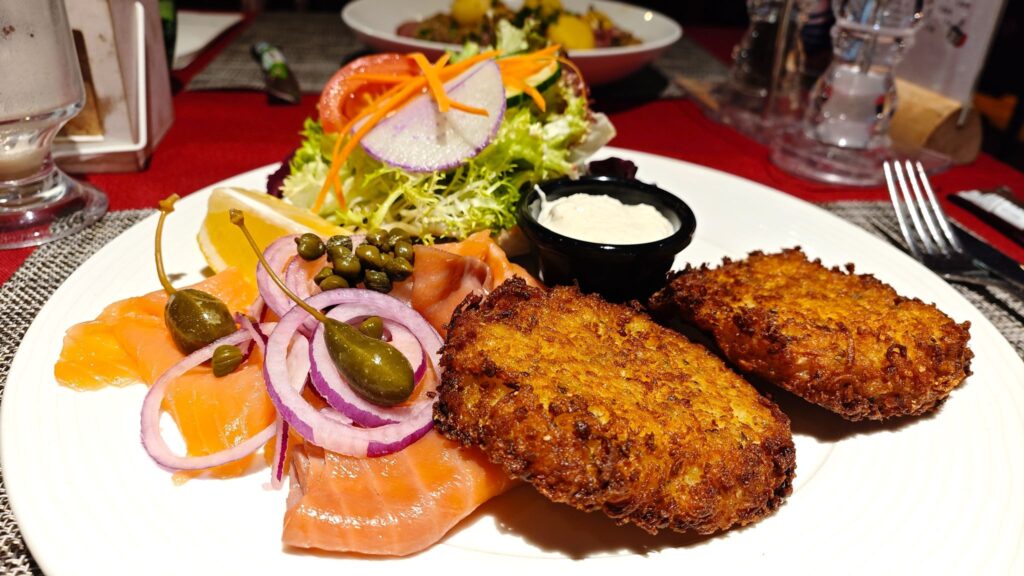
Accompanying the Reibekuchen is smoked salmon with its delicate, savory richness. Its tenderness pairs wonderfully with the crispy potatoes. Topping it with horseradish sauce enhances the mouthfeel – its sharp, tangy, and slightly spiced flavor, with a cool creaminess, balances the rich salmon, bringing quite a refreshing bite!
The dish also comes with a fresh salad, briny, tart caperberries, and a wedge of lime, contrasting to the warm, hearty Reibekuchen. Together, these elements create real diverse flavors – crisp, smoky, tangy, creamy, and refreshing all at the same time!
The Smoked Pork Neck with Savory Broad Beans and Sautéed Potatoes with Bacon is often said to be the national dish of Luxembourg.
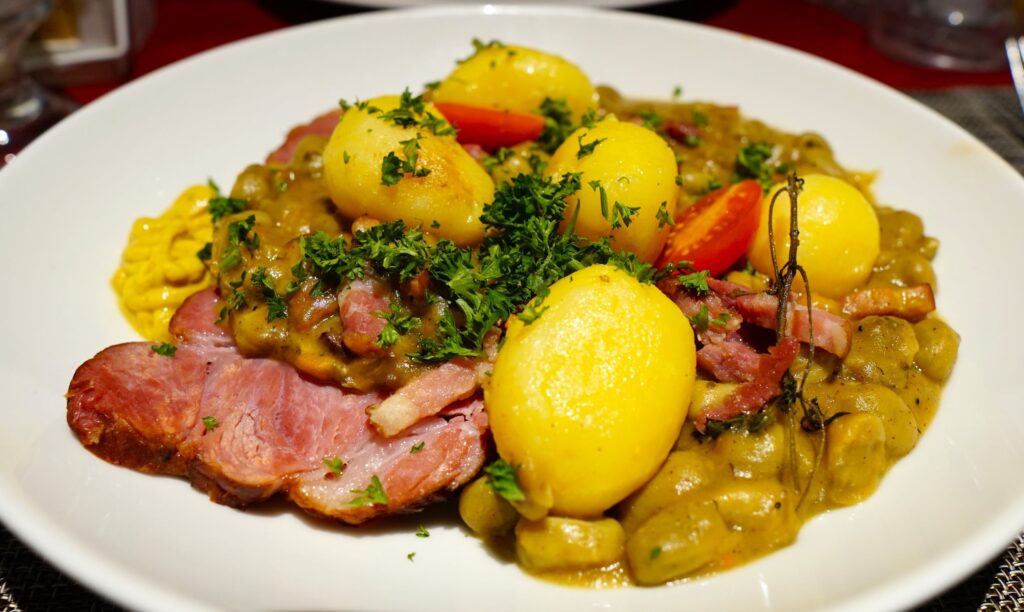
The pork neck is tender and succulent, with rich, smoky flavor. It’s perfectly balanced by the creamy, hearty broad beans, which are cooked in a mustard-based sauce – a velvety, slightly tangy mixture. It enhances the beans’ earthiness and creates a melt-in-your-mouth texture that complements the smoky pork.
Adding to the dish are sautéed potatoes with crispy bacon. The potatoes are nicely crisped on the outside, while the bacon adds a savory, umami crunch. A sprinkle of parsley lends an aromatic freshness, while the juicy cherry tomatoes bring a bright sweetness.
The dish is best enjoyed with a dollop of mustard—an essential addition to many Luxembourgish meals. Luxembourg mustard is tangy and slightly sweet, with a subtle spiciness that cuts through the rich pork and creamy beans. Combining smoky, creamy and savory flavors, this dish is a fine example of Luxembourg’s rustic and satisfying cuisine.
For dessert, we chose the Raspberry Tart with Dark Chocolate. The tart is served chilled, drizzled with a thin layer of smooth, velvety dark chocolate ganache. The chocolate has a deep, slightly bitter edge that pairs beautifully with the tart raspberries on top.
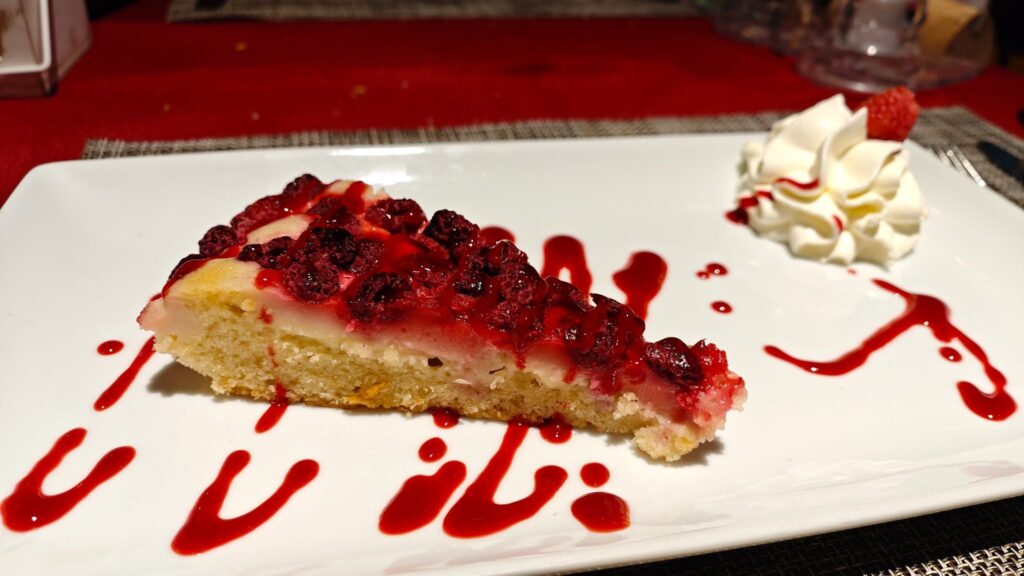
The base tastes buttery and a bit eggy, providing a soft, yet sturdy foundation for the rest of the dessert. On the side, a dollop of whipped cream adds a creamy, soft sweetness that complements the rich chocolate, contributing to a refined, indulgent flavor.
As we wrap up our rich, delicious meals of Luxembourg and its multicultural charm, we can’t help but look forward to our next trip. And we’ll be driving to Vianden Castle, a stunning medieval fortress located in the idyllic town of Vianden. Stay tuned as we explore more of Luxembourg, both on the plate and beyond!
